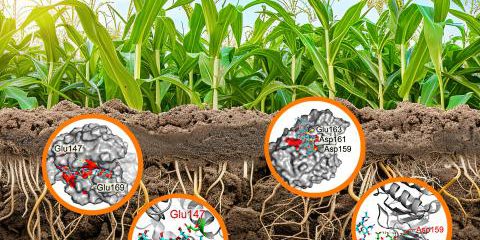New findings about chitinases, enzymes found naturally in plants, could allow farmers to address fungal infections sooner and more efficiently. Researchers from the U.S. Department of Energy Ames National Laboratory investigated chitinases from corn and rice to better understand their roles in indicating if a plant is under stress and combating fungal attacks. Their findings suggest that these enzymes could be a valuable resource not only for monitoring crop health overall but also for optimizing biomass for use in alternative energy sources.
Two of the most important agricultural crops worldwide are corn and rice. In addition to providing food, both have important energy applications as well through the use of their waste plant matter, or biomass, from crop harvesting. Corn is a major crop used to create biofuel, while rice husks are used for heating, electricity, and biofuel. One major threat to crop yields comes from pathogens such as fungi, bacteria, and viruses. Fungi alone cause a 35% – 40% yield loss in corn and rice crops each year.


